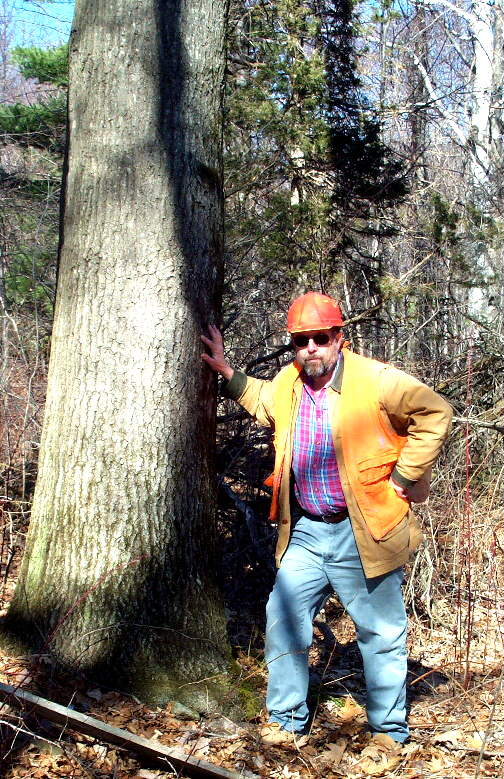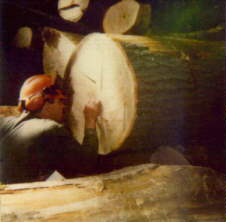|

Timber Reconnaissance Services
Begins with the transfer of site boundary lines to USGS topo. Topo with property lines printed at specified scale with UTM
rulers and grid for use with handheld GPS. This serves as base map for cruise.
If available, an aerial photo is
downloaded and property bounds transferred to same. Aerial is used to view stand types, roads/access, streams/wetlands, and
other visible features.


Cruise type is variable probability sampling. On-site walkthrough cruise conducted stopping every 100 paces (300'+-) to collect
basal area data on species, dbh and merchantable height. The purpose of the cruise determines the data collected. For example,
only sawtimber trees are sampled for a sawtimber cruise. Data on all size classes(regeneration, poles and sawtimber) can
be recorded, for example, for management plans and current use classification.
The timber reconnaissance report includes
the stand descriptions (volumes, basal areas etc.), topo, aerial (when available), and site plan showing boundaries, stands,
road/access, streams/wetlands, and other information necessary to assess and plan the proposed work.
Back at the
office field data is processed using NED/SIPS, stand processing software published by the U.S. Forest Service. NED/SIPS generates
reports for just about any stand parameter, such as volumes, basal areas and stem counts by species and dbh.


|




